A Comprehensive Guide to Avoiding Common Mistakes in Coral Fragging
Fragging corals can be an interesting experience; however, you should avoid common pitfalls that may harm your marine life. In this blog, we will outline the most frequent mistakes reefers make when fragging corals and offer tips to help you achieve success.
Table of Contents
Introduction to Coral Fragging
The ongoing addition of corals is essential for reef keepers, allowing them to propagate and share their unique aquatic organisms. This process not only helps maintain the health of the dominant coral colony but also promotes the growth of new frags that can be exchanged or sold. Understanding the concept of fragging is crucial for the success of both the parent coral and the newly formed frags.
Yet, fragging is not that simple as it seems. The majority of the reefers tend to make mistakes that bring to life very serious consequences for their corals. Discussing the issues, we will examine common mistakes that hinder coral fragging and explore ways to address them.
Mistake 1: Using Improper Tools
The fragging process relies on the right tools for proper execution. Many amateurs do not realize this. Instead of borrowing tools from mechanics, such as pliers and scissors, which can seriously damage coral, it is better to purchase your own. Additionally, it is essential to buy the necessary fragging tools, including bone cutters and scalpels.
Specialized equipment for fragging not only creates cleaner cuts but also reduces the risk of introducing foreign substances into your tank. By keeping your tools clean and rinsing them after each use, you can prevent cross-contamination between different corals.
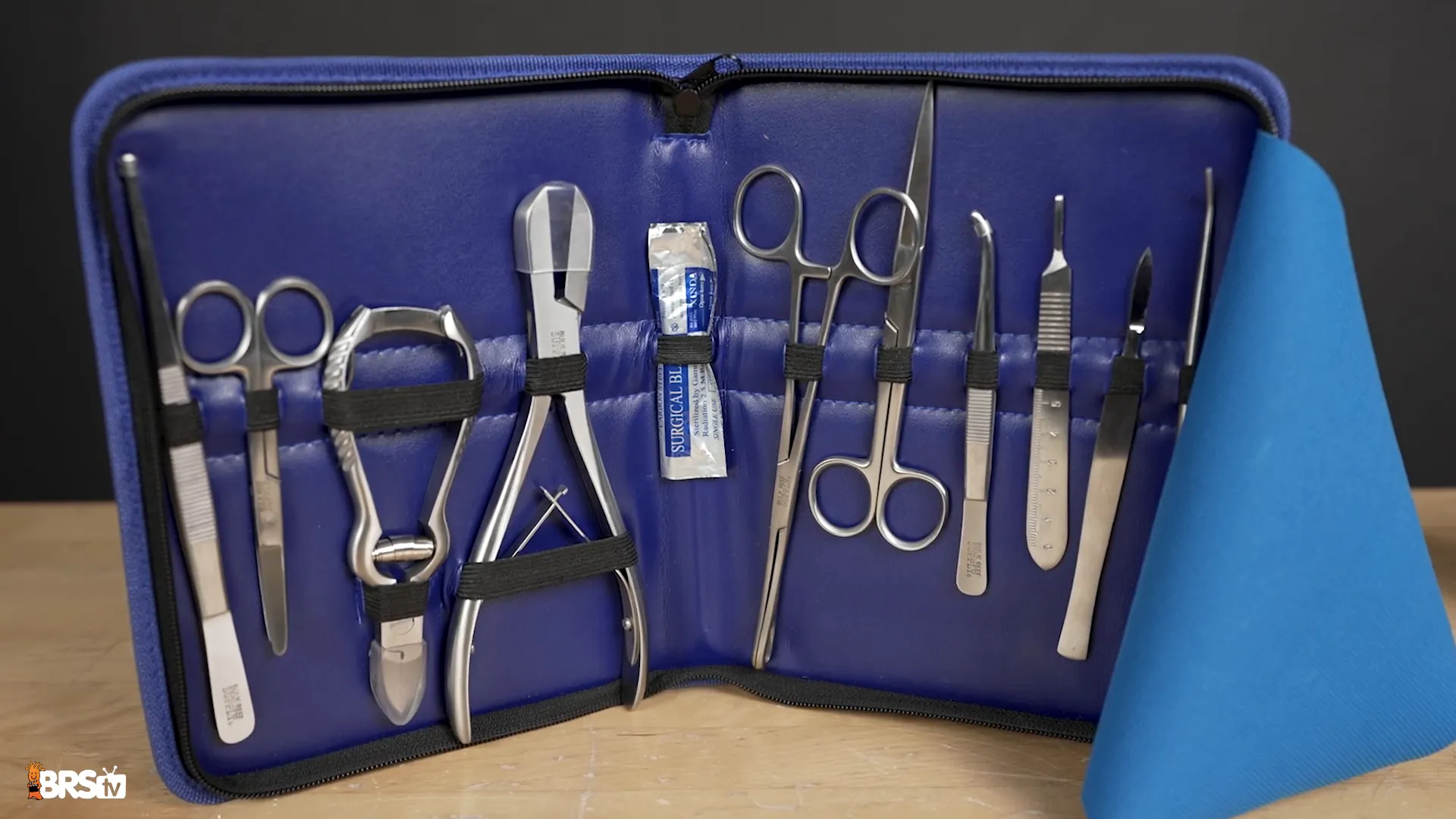
Mistake 2: Fragging Unhealthy Corals
The most critical error that a person can make is the decision to frag unhealthy corals. In case the coral is displaying stress like reduced polyp extension or the tissue is receding, it would be better to wait until it fully recovers rather than cutting it. Cutting an unhealthy coral can absolutely decrease the overall health and might even result in the death of the coral.
Nonetheless, some cases are exemptions. For instance, in situations where a coral is infested with brown jelly disease or rapid tissue necrosis (RTN), it may be essential to carry out fragging to hinder the transfer of these diseases. In these circumstances, the priority is to hasten the intervention so that the remaining healthy tissue can be saved.
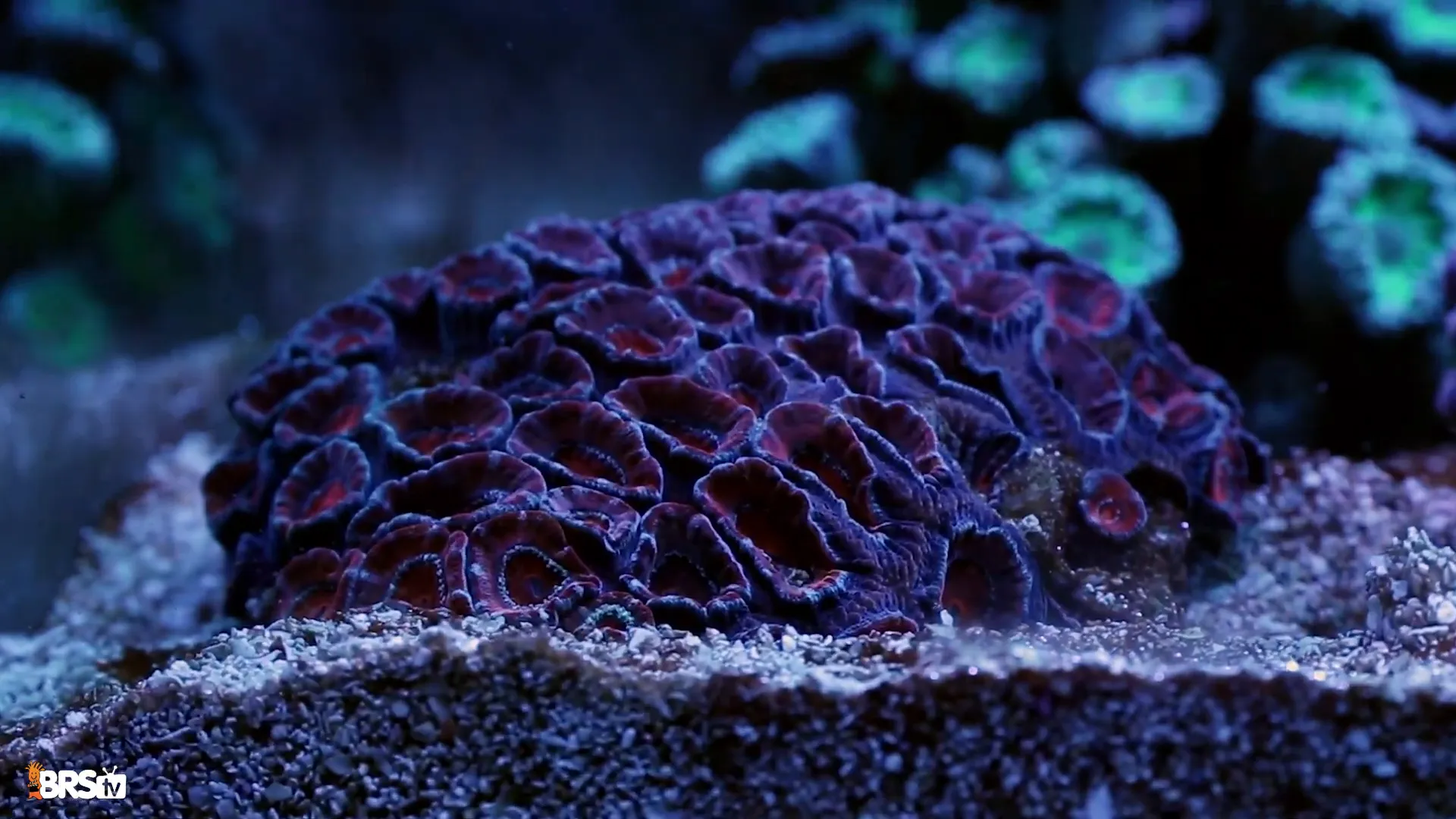
Mistake 3: Fragging Too Frequently
Excessive fragging may not only cause stress to the parrent coral colony but also to the frags. The corals need sufficient time to recover and are, thus, prone to poor health when they are fragged more frequently than they can heal. For instance, Gorgonians may need a few months to recover from this cutting.
Conduct fragging only when absolutely necessary, such as when coral is overgrowing its space or when there is competition among corals. Allow your corals enough time to recover so that they can create a beautiful and thriving display.
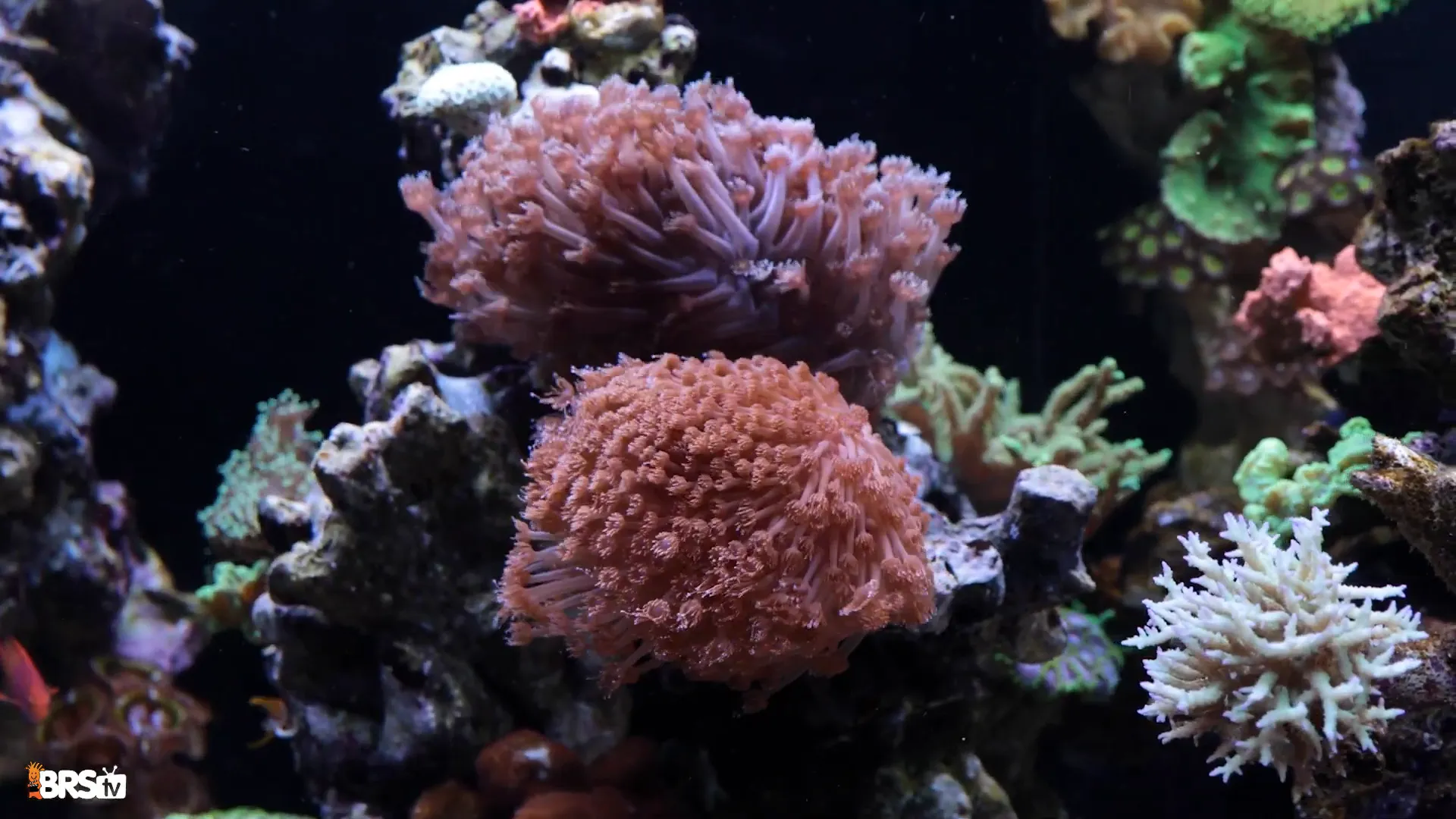
Mistake 4: Cutting in the Wrong Spot
Fragging corals is a highly precise exercise. A mistake in the area of cutting can lead to coral and affect its healing ability. For instance, in case of fragging Euphyllia, it is necessary to cut just above the skeleton low enough to prevent injury to the vulnerable tissue.
Before cutting, it’s wise to have a clear blueprint in mind. Consider how the cut will impact the health of the coral and the surrounding ecosystem. Remember that exposing shaded areas to light can stress the coral, so keep this in mind while fragging.
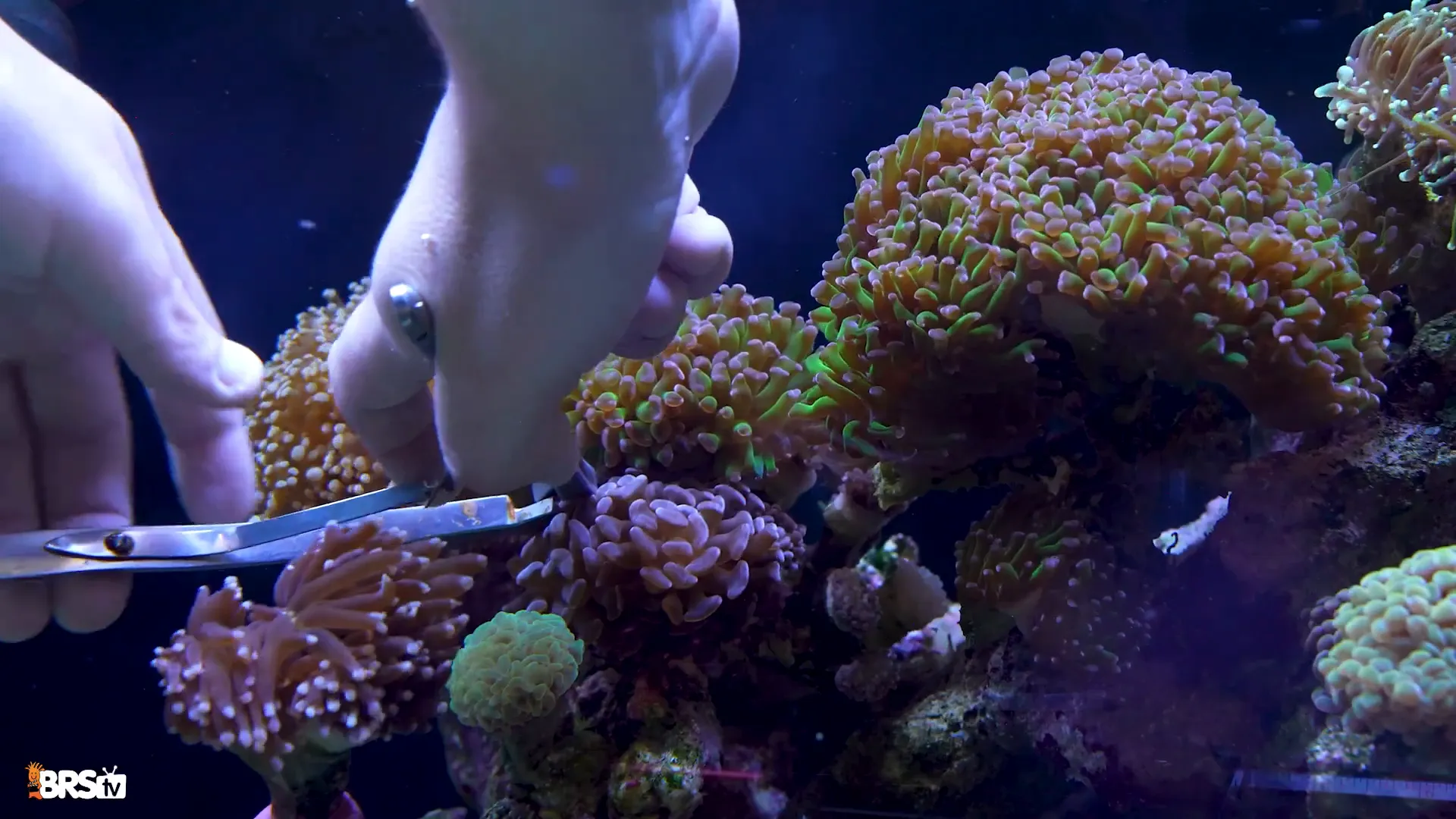
Mistake 5: Improper Coral Handling
Fragile corals belong to the group of soft living organisms that need protection from environmental disturbances and health threats. If you handle them with bare hands, you will bring in oils and other contaminants which may be detrimental to the coral. It is advisable to always put on gloves and use tools like forceps to assist you in handling fragments, particularly the smaller ones, in order to reduce tissue damage.
Approaching baby frags requires careful handling. Small injuries can quickly lead to infections, making it essential to handle corals with care during the fragging process.
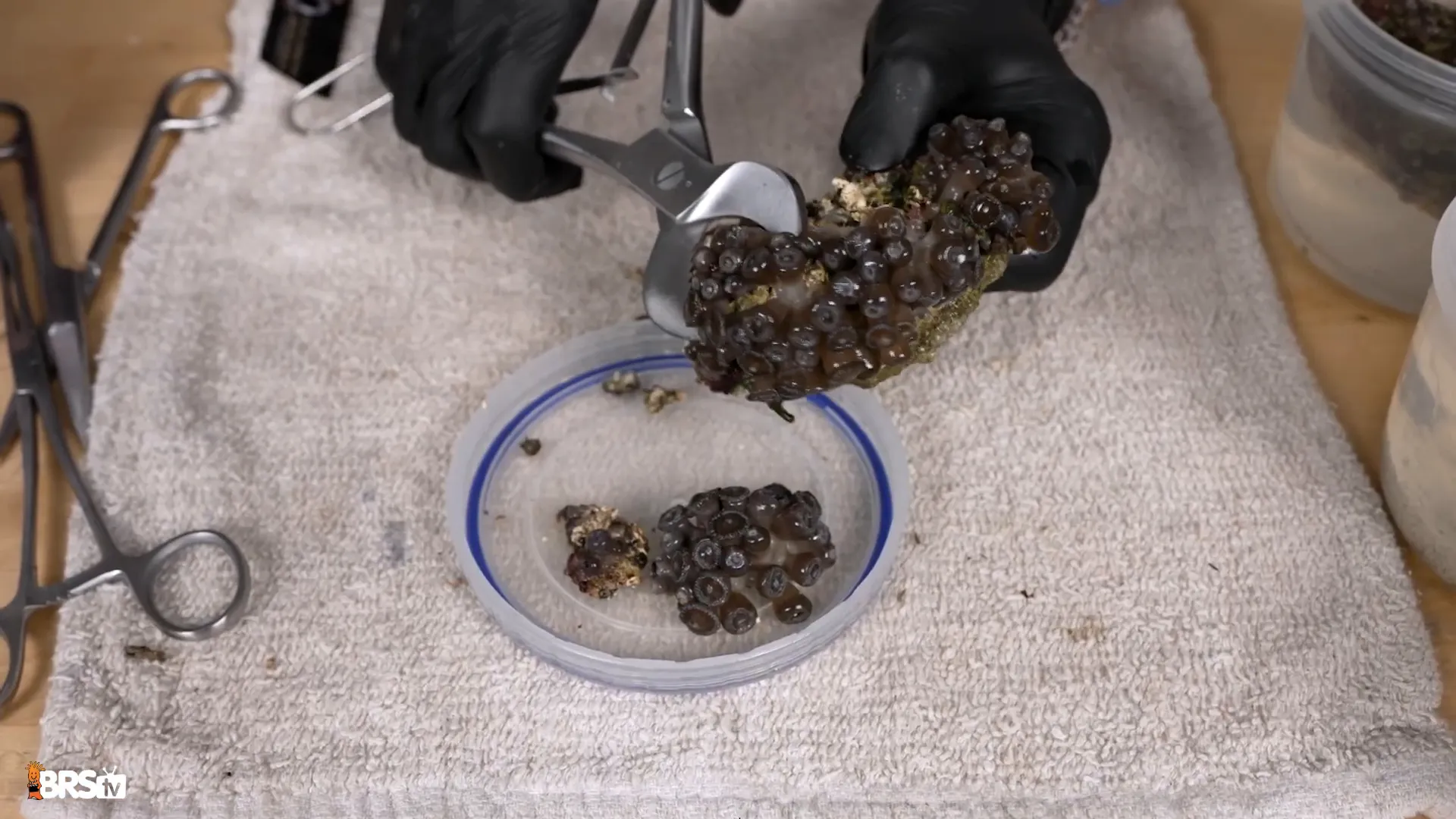
Mistake 6: Choosing the Wrong Adhesive
When fragging corals, one of the most important steps is selecting the right adhesive. Super glue is a popular choice due to its ease of use, but making the right selection is crucial. Generally, gel super glue is preferred over liquid versions because it allows for more precise application and minimizes mess.
In selecting an adhesive, the coral species involved and the substrate materials should be taken into account. For smaller fragments, a small amount of super glue may suffice. However, for larger items, a mixture of super glue and epoxy is the best option for achieving a strong bond. The epoxy will serve as the primary adhesive, ensuring that the fragment is securely held in place during the curing process.
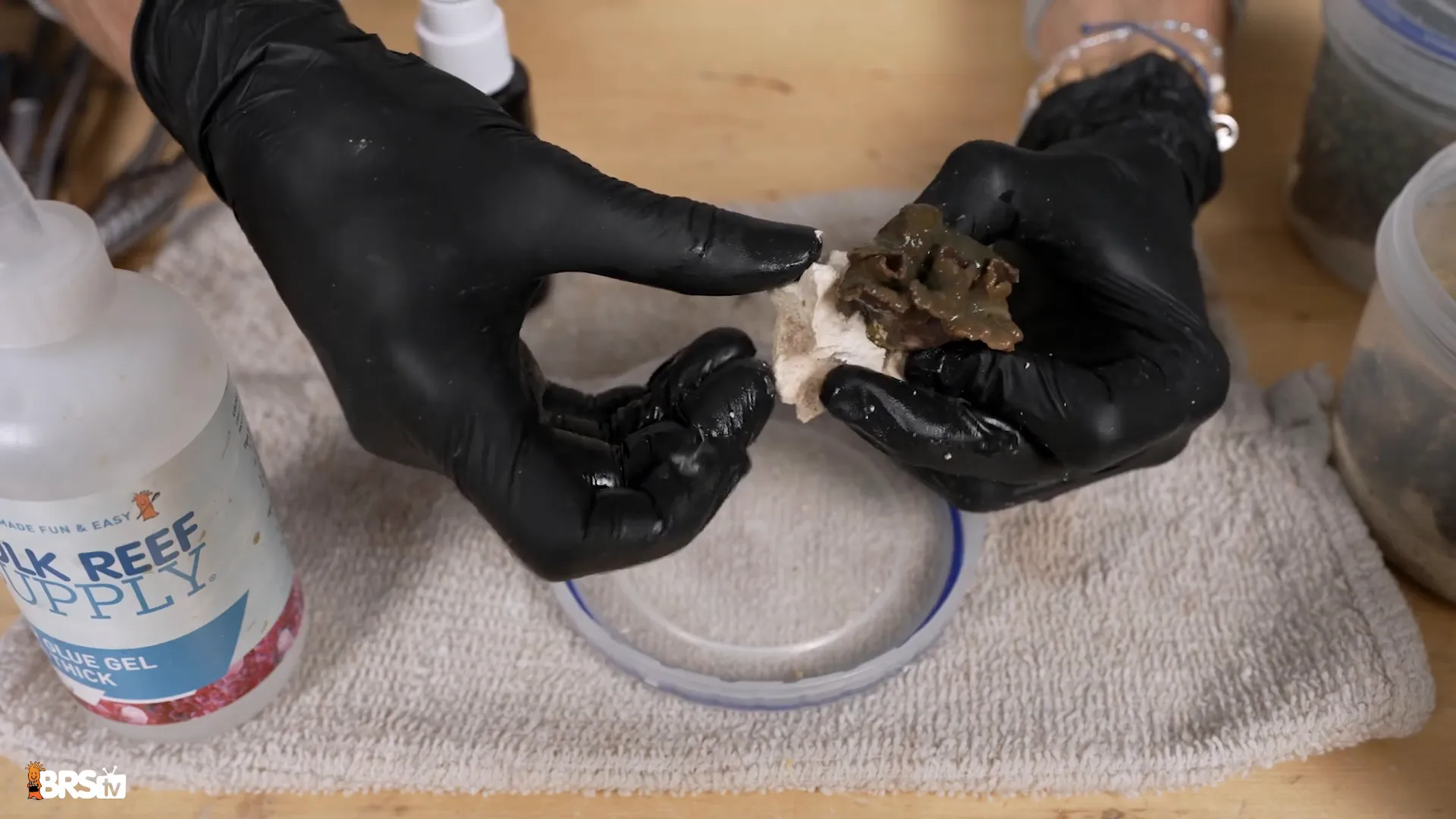
Mistake 7: Inadequate New Frag Care
Refragging helps give your new frags a significant level of comfort. Many reefers do not realize how crucial it is to recreate the initial coral environment. Support in an area where frags are dark and have no flowing water can easily lead to stress and ultimately cause them to droop.
To start, ensure that the new frags receive the appropriate light and flow they had in their previous habitat. Consider adding carbon to the tank, as it will help counteract any chemical warfare from other corals. This strategy will be the most direct way to ensure your frags thrive.
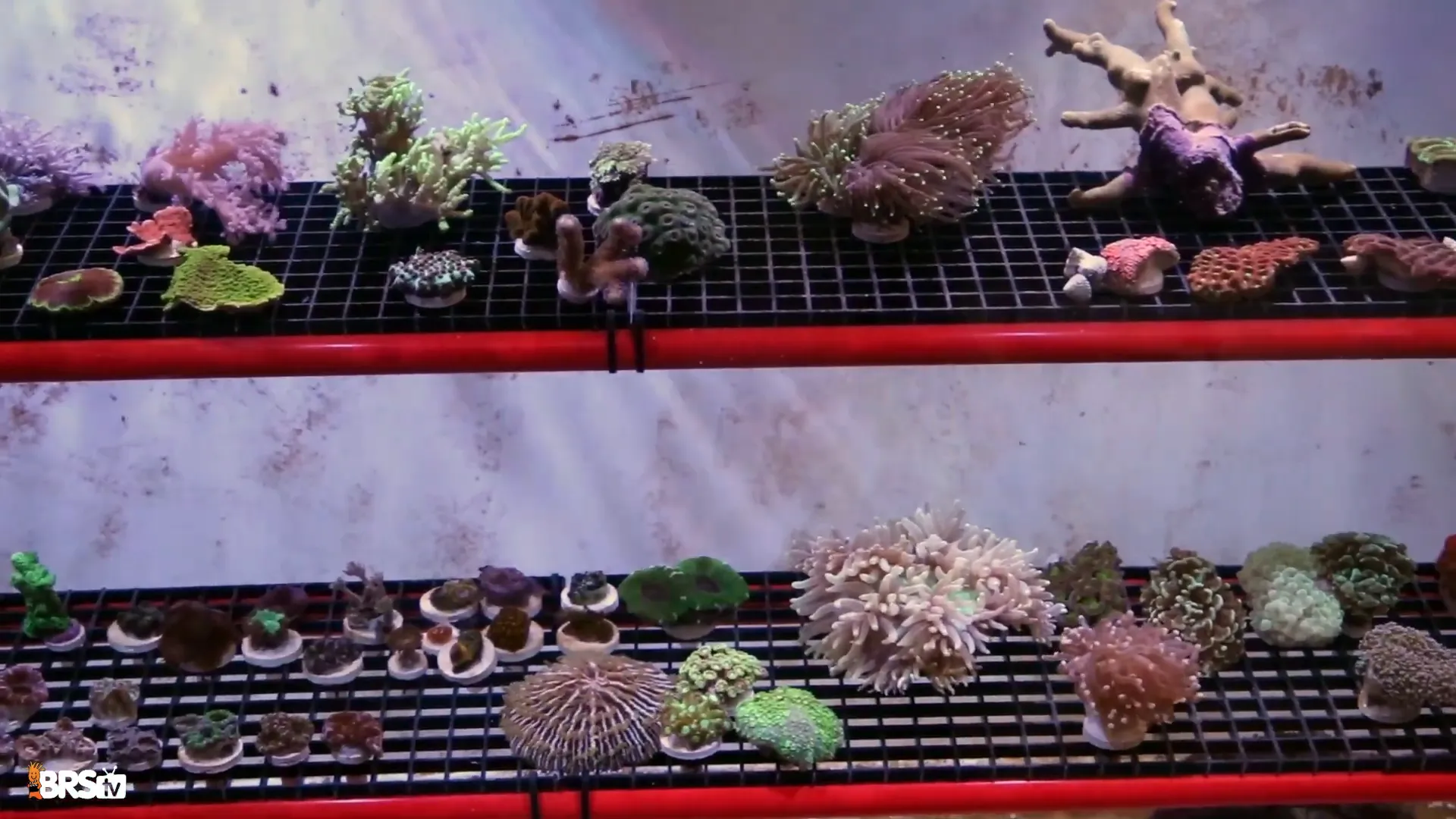
Mistake 8: Not Having a New Frag Plan
It is important to have a plan for your newly created frags before you start fragging. Consider whether you need a frag rack or if you intend to sell or trade them. Having a strategy will ensure your frags receive proper housing and care.
In the absence of a proper plan, frags can end up scattered throughout your tank, resulting in an untidy display. Whether you are attending a frag swap or simply looking to upgrade your collection, staying organized is essential for successfully managing your frags.
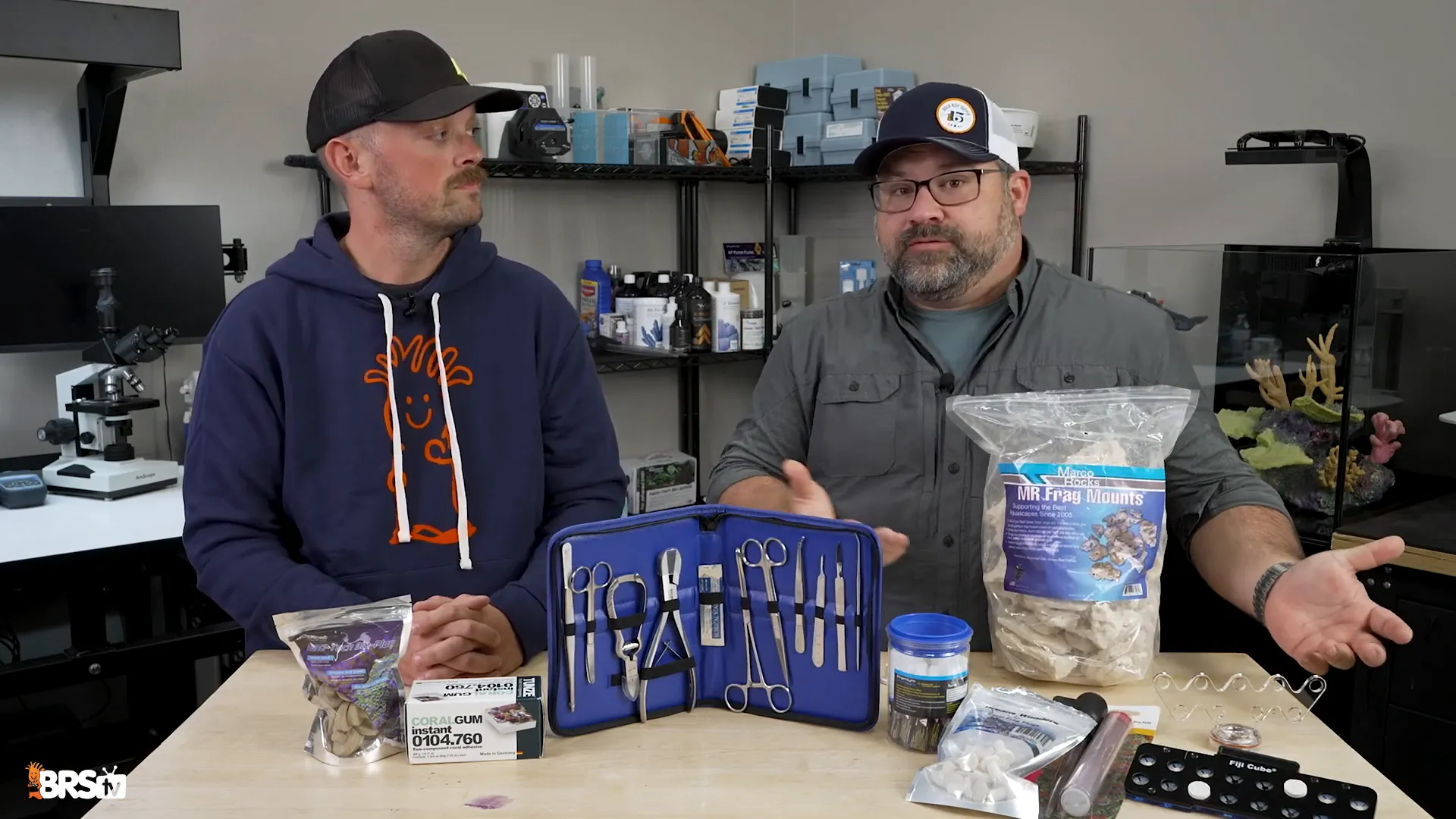
Conclusion
Avoiding common blunders when fragging corals is essential for the health of both your frags and the mother colony. With the right tools and proper care, along with a clear plan, you can ensure a successful fragging session. Remember, your goal is to heal the coral, not just to frag it.
If you dedicate time to learn the concepts thoroughly and prepare adequately, you will reap the benefits of a vibrant reef environment. Fragging corals can be an enjoyable activity, and through this practice, you can help ensure the sustainability of marine life.
FAQ: Common Questions About Fragging Corals
-
What is the best time to frag corals?
Perform fragmentation on the corals when they are healthy and actively growing. Avoid the fragging process during periods of stress or illness.
-
Do I need special tools for fragging?
Definitely, using special fragging tools like bone cutters and scalpels enables more precise and less invasive cuts on coral, resulting in less damage.
-
How long does it take for frags to settle in?
It varies by species, but most frags require several weeks to acclimate to their new surroundings.
-
Can I use super glue underwater?
Sure, gel super glue is an excellent option for underwater use. However, for the best adhesion, always remember to clean the surface of any debris.
-
What should I do if my frag looks unhealthy?
Check the water parameters and ensure that the frag is in a suitable environment. If necessary, consider relocating it to a less stressful area.
Source and credits: This article was inspired by the amazing content creator. All credits for the video and images go to; Bulk Reef Supply. Visit their channel for more fantastic content.

























